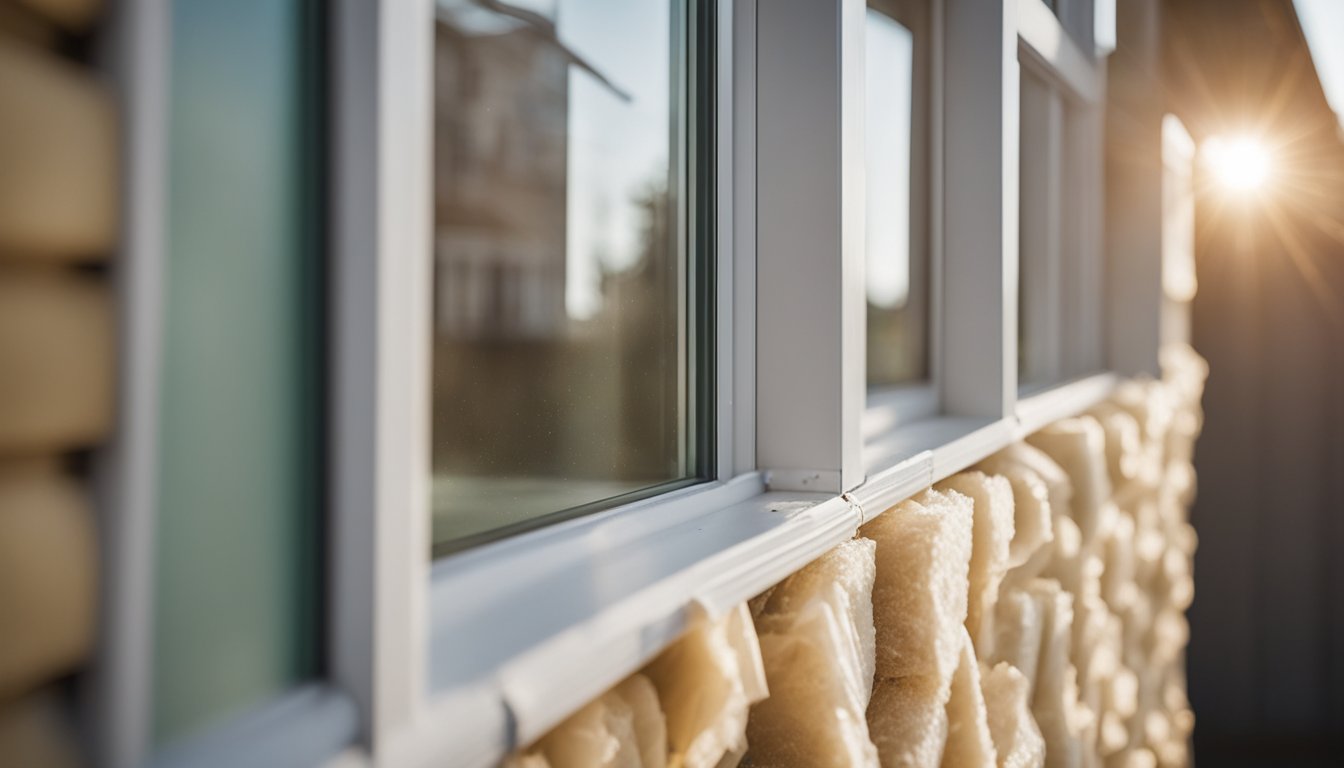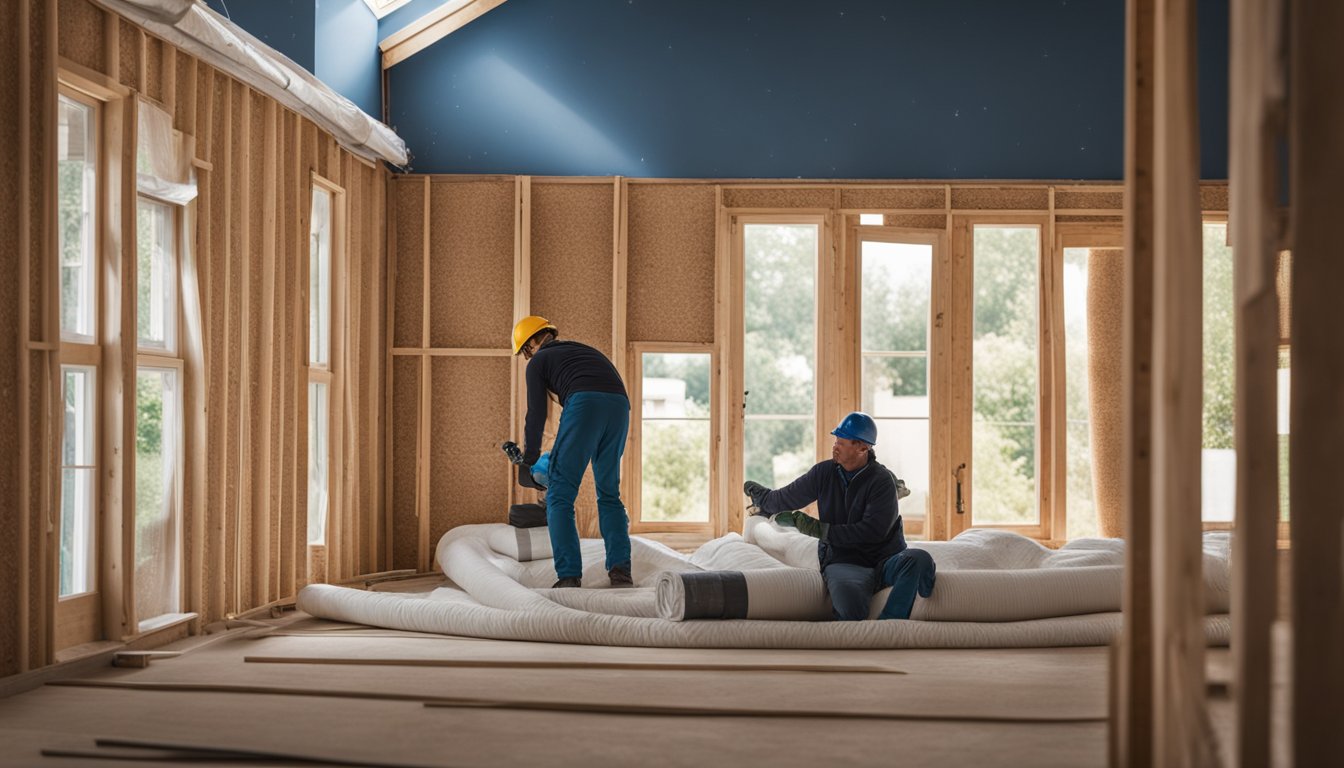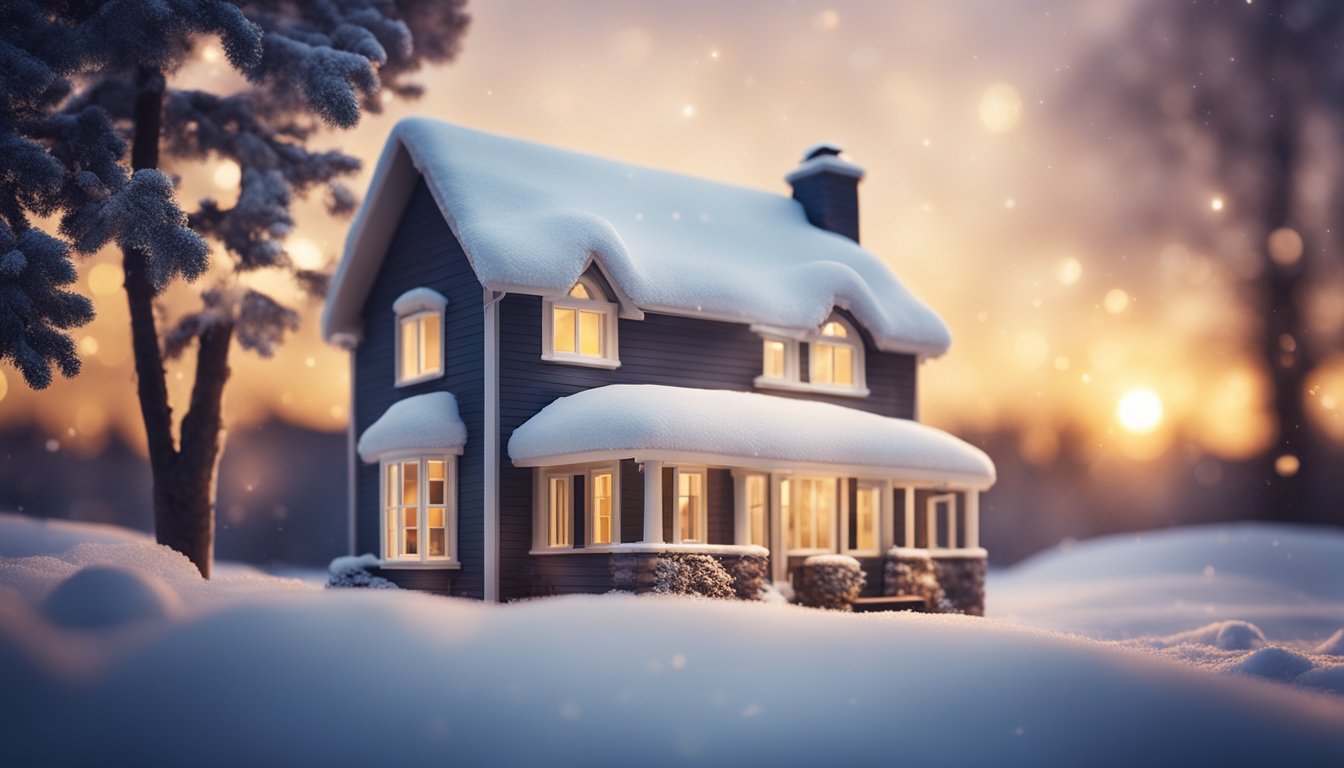Late updated: 22 Jul 2024 09:07
Written by: Eleanor Hartman
Improving Home Insulation To Reduce Energy Bills: Effective Strategies and Benefits
Improving home insulation is one of the most effective steps we can take to reduce energy bills and enhance comfort. A well-insulated home can retain heat more efficiently, resulting in significant energy savings and a reduced environmental footprint. Whether your home is old or new, upgrading insulation is a cost-effective investment that pays for itself over time.

Many homeowners are surprised to learn that proper insulation can cut energy use by up to 45%. This means not only lower bills but also a more comfortable living environment, as insulation helps regulate indoor temperatures across seasons. From walls to floors to attics, every part of a home's structure can benefit from enhanced insulation.
Different homes require different insulation strategies. It's crucial to assess the specific needs of your home to choose the right insulation materials and methods. You'll save on energy costs and build a more sustainable and energy-efficient household, directly benefiting your wallet and the planet.
Key Takeaways
- Proper insulation significantly reduces energy bills.
- Evaluating your home's specific insulation needs is vital.
- Improved insulation enhances comfort and energy efficiency.
Understanding Home Insulation and Energy Efficiency
Proper home insulation is critical for reducing energy bills and enhancing comfort. It involves specific materials and methods to ensure effective energy conservation in key areas of your home.
The Role of Insulation in Energy Conservation
Insulation plays a pivotal role in maintaining your home's temperature by reducing heat transfer through walls, floors, and ceilings. Effective insulation keeps your home warm in the winter and cool in the summer. By preventing heat loss, we can significantly lower heating costs, which is crucial for colder climates. According to the U.S. Department of Energy, an insulation upgrade can reduce heating and cooling expenses by approximately 15%.
Additionally, proper insulation helps in reducing greenhouse gas emissions by decreasing energy consumption. It's essential to conduct a home energy audit to identify areas that need better insulation. This step ensures our home remains energy-efficient and eco-friendly.
Key Areas for Insulating Your Home
Identifying key regions for insulation is fundamental. Attics, walls, floors, basements, and crawlspaces are top priorities for insulation efforts. The attic is particularly significant because it is a primary source of heat loss. Insulating the attic floor and sealing any gaps can prevent warm air from escaping.
Walls are another critical area. Insulating exterior walls can reduce heat transfer and make our home more energy-efficient. Floors, especially those above unheated spaces, should also be insulated. For homes with basements, insulate rim joists and walls to prevent heat loss. Crawlspaces should be insulated and ventilated effectively to maintain optimal temperatures.
Insulation Materials and Methods
Various insulation materials and methods are available. Fibreglass, loose-fill, and reflective insulation are some common types. Fibreglass batt insulation is popular due to its ease of installation and cost-effectiveness. Loose-fill insulation is ideal for attics and irregularly shaped spaces because it conforms to different areas.
Reflective insulation, such as radiant barriers, reflects radiant heat away from the home. The effectiveness of insulation is measured in R-values, which indicate thermal resistance. The higher the R-value, the better the insulation's performance.
Choosing the right material and method depends on factors like location, climate, and specific needs. Consulting with professionals can help us select the best options to enhance our home's energy efficiency.
By focusing on these aspects, we can create a well-insulated home that reduces energy bills and contributes to environmental sustainability.
Executing Energy-Efficient Insulation Upgrades

By taking a systematic approach to energy-efficient insulation upgrades, we optimise our heating and cooling systems, reduce energy waste, and lower utility bills.
The Process of Air Sealing and Insulation
Air sealing is crucial to prevent drafts and reduce air leakage. We start by identifying gaps in exterior walls, around electrical outlets, and in the attic. Using caulk or weatherstripping, we seal these areas to prevent airflow that can cause heat loss.
Next, we focus on adding insulation. It's important to choose the right type and thickness for your climate zone. For example, attic insulation should be at least 10-14 inches thick to be effective, particularly in colder areas. This helps maintain consistent temperatures and improve energy efficiency.
Proper insulation also reduces moisture build-up, which can lead to mold growth. By controlling conductivity and convection, we ensure that the home remains energy-efficient and cost-effective. These steps provide peace of mind, knowing the home is better insulated against the elements.
Professional Energy Assessments
Professional energy assessments are essential in identifying inefficient areas in our homes. An insulation contractor conducts a thorough inspection, using specialised equipment like blower doors and infrared cameras. These tools help detect hidden leaks and insufficient insulation.
The assessment usually covers all living spaces, exterior walls, attics, and basements. Based on the findings, the assessor will suggest targeted actions to improve energy efficiency, like upgrading attic insulation or sealing drafty windows.
Through expert evaluations, we gain a detailed understanding of where energy upgrades are most needed. This can significantly lower heating and cooling costs and decrease the home's carbon footprint. It's a proactive step towards more sustainable living.
Strategies for Maximising Energy Savings
Maximising energy savings involves implementing various strategies. First, we ensure that the chosen insulation materials are Energy Star-rated, offering high performance and durability. Adding insulation to attics, walls, and crawl spaces can save us around 15% on heating and cooling costs annually.
Ventilation is also vital. Proper ventilation systems prevent moisture and improve air quality, reducing the risk of mold and ensuring good airflow. We also recommend considering energy-efficient heating systems like heat pumps which can further cut energy consumption.
Regular maintenance checks by professionals help keep the heating and cooling systems running efficiently. Simple weatherisation practices, such as sealing air leaks and using programmable thermostats, can also contribute to lowering total energy costs. Implementing these strategies results in a significant rate of return and sustained energy savings.
Frequently Asked Questions

We address common queries about enhancing home insulation to reduce energy bills efficiently. These insights will help you understand the potential costs, savings, methods, and benefits.
What are the potential savings on heating bills after enhancing loft insulation?
Improving loft insulation can cut heating costs by up to 20%. For the average homeowner, this translates to approximately £200 in annual savings. The exact amount depends on factors like property size and current insulation levels.
What is the typical cost associated with retrofitting insulation into established walls?
Retrofitting wall insulation typically costs between £400 and £500 per wall. This cost can vary depending on the type of insulation material used and the complexity of the installation.
What methods are available for insulating a house currently lacking sufficient insulation?
For homes lacking proper insulation, several methods can be employed. These include adding insulation to lofts, walls, floors, and basements. Materials like fibreglass, cellulose, and foam are commonly used for their efficiency and cost-effectiveness.
How can one improve home insulation for better thermal efficiency during the summer months?
Improving home insulation also benefits summer cooling. Installing reflective insulation in the attic or adding insulated doors and windows reduces heat gain. Proper ventilation and shading devices further enhance thermal efficiency.
What are the tangible benefits of upgrading the insulation in an ageing property?
Upgrading insulation in older homes improves energy efficiency, reduces dampness, and enhances indoor comfort. It also leads to significant savings on utility bills and increases property value. Improved insulation is a worthwhile investment for long-term benefits.
Are there any government grants available to assist with home insulation improvements?
Several government schemes offer funding for home insulation projects. Check eligibility for grants like the Green Homes Grant or local council schemes which provide financial assistance for energy efficiency upgrades. These can significantly offset the costs of insulation improvements.